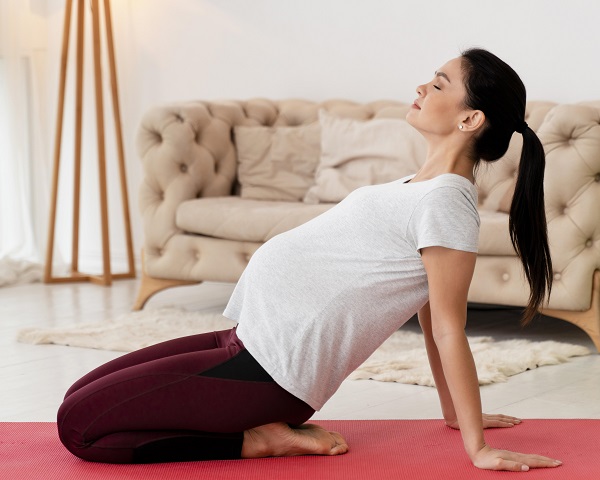Pregnancy is a major change in your life and for your body. You have to be cautious and take care of yourself more than ever. However, when we talk about taking care of yourself, we often associate it with following a healthy diet, exercising and keeping yourself hydrated.
Did we just say exercising? Yes, we did. Exercising and pregnancy don’t go hand in hand. At least that’s what we think. We seem to think EXERCISING IS A BIG NO during pregnancy. But is it really the case? If you have been fitness-conscious or active before pregnancy, being inactive or resting all the time during pregnancy to be safe may be irritable for you. It may also be counterintuitive because activity and exercise are good for your health – even during pregnancy.
Read this blog to know more.
Is it safe to exercise during pregnancy?
Yes, it is safe to exercise during pregnancy but there are some rules to follow. One rule you cannot break is that you have to be gentle. You have to avoid strenuous exercises and those that may cause you to go off-balance or fall, such as cycling or standing yoga. There are several benefits of exercising during pregnancy.
Exercising during pregnancy offers numerous benefits for both the mother and the developing baby. Regular physical activity can help improve overall fitness, which in turn supports the mother’s ability to carry the baby comfortably as the pregnancy progresses. One of the key advantages is the reduction of common discomforts such as back pain, swelling, and constipation, which are frequent complaints during pregnancy. Exercise, particularly activities like swimming, and prenatal yoga, can help with these issues by promoting better circulation, posture, and muscle tone.
Another significant benefit is that it may ease labour and delivery. Staying active can improve cardiovascular health, stamina, and muscle strength, all of which are vital during childbirth.
Furthermore, exercising in pregnancy can improve mental health by reducing stress, anxiety, and depression. The hormonal changes during pregnancy can affect mood, and regular physical activity releases endorphins, which can help boost mood.
Exercise also helps in keeping weight within healthy limits for both mother and baby. Additionally, exercising can improve blood circulation and keep muscles active.
However, you must always consult with a healthcare provider before beginning any exercise routine during pregnancy to ensure the safety of both you and the baby.
Some tips to keep in mind while exercising during pregnancy
Consult a doctor first
Before starting any exercise routine during pregnancy, it’s essential to seek medical advice. A doctor can assess your health and guide you regarding the safest and most suitable activities based on your fitness levels and stage of pregnancy.
Here are some exercises you can try, but talk to your health provider first.
- Wall pushups
- Leg raises
- Step-ups
- Modified planks
- Walk
- Supported V-sits
Start slow:
If you’re new to exercise or haven’t been active regularly, ease into your routine gradually. Begin with low-impact exercises like walking or prenatal yoga, allowing your body to adapt to the physical changes that come with pregnancy without overexerting yourself.
Avoid some exercises:
Certain exercises, like those that involve heavy lifting, lying flat on your back, or high-impact movements, should be avoided during pregnancy. These can put unnecessary strain on your body or increase the risk of injury. Focus on gentle, low-risk activities to keep fit safely.
Listen to your body:
Your body will give you signals if something doesn’t feel right. If you experience dizziness, shortness of breath, discomfort, or pain, stop exercising and rest.
Closing thoughts
Exercising during pregnancy can offer a plethora of benefits for both your physical and mental well-being. However, it’s essential to exercise keeping the things discussed in this blog in mind. Always remember that your health and safety, along with that of your baby, should remain the top priority.




